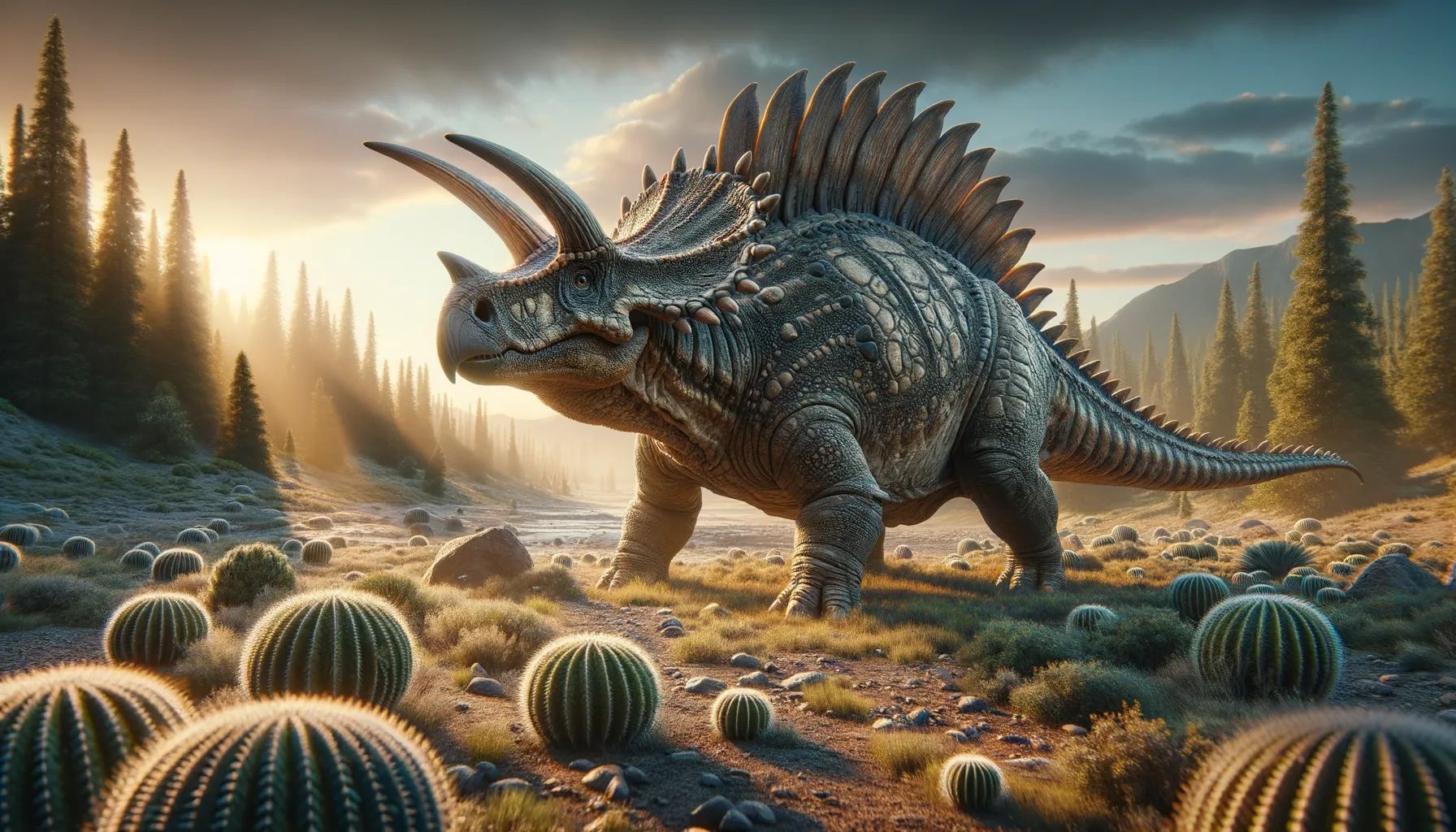
Tarchia
Unyielding armor of the Cretaceous plains.
Period
Cretaceous
Length
Roughly 8 meters from head to tail.
Height
About 1.2 meters at the shoulders.
Weight
Approximately 2 to 4 tonnes.
Tarchia is a genus of ankylosaurid dinosaur that lived during the Late Cretaceous period. Known for its heavily armored body and club-like tail, it was a herbivore that roamed the ancient landscapes of what is now Mongolia. Tarchia is distinguished by its robust physical build and intricate skull structure, offering paleontologists valuable insight into the evolution of ankylosaurids.
Diet
Tarchia was a herbivore, feeding on low-lying plants and foliage. Its peg-like teeth were adapted to grind tough vegetation.
Hunting
As a herbivore, Tarchia did not hunt. It relied on its armored body for protection against predators.
Environmental challenges
Tarchia faced challenges such as predation from large theropods, requiring strong defensive adaptations. Its environment might have presented periods of drought or scarcity of plant matter, demanding foraging skills. The ability to survive harsh Cretaceous climates would have been essential.
Speed
Slow-moving, relying on its armored body for defense.
Lifespan
Estimated at about 30-50 years.
First discovery
First described from fossils found in Mongolia in 1970.
Fun Facts
- Tarchia was a type of ankylosaur, known for its armored body and club-like tail.
- This dinosaur lived roughly 70 million years ago during the Late Cretaceous period.
- Tarchia means 'brainy one' in reference to its relatively large brain compared to other ankylosaurs.
- Fossils of Tarchia have been primarily found in what is now Mongolia.
- Tarchia's heavy armor was likely used as protection against predators like the infamous Tyrannosaurus rex.
- Despite its fearsome appearance, Tarchia was a herbivore, feeding on low-lying plants.
- Its thick, bony eyelids provided extra defense, making it a tough target for any predator.
Growth and Development
Tarchia likely grew steadily over several years, reaching maturity at a relatively late age for a dinosaur. Fossil evidence suggests that its armored plates developed as the dinosaur advanced in age, providing increased protection over time. Juveniles might have been more vulnerable to predators.
Habitat
Tarchia inhabited semi-arid regions with sparse vegetation, well-suited to its defensive lifestyle. It lived on open plains and forested areas where its armored protection helped in avoiding predators. Seasonal changes and the availability of water sources influenced its distribution.
Interaction with other species
Tarchia coexisted with a variety of other Cretaceous species, including both herbivores and predators. Its heavy armor likely deterred interactions with carnivorous dinosaurs. It may have shared its habitat harmoniously with other herbivores.
Natural lifespan
Tarchia might have lived naturally for about 30-50 years.
Reproduction
Tarchia likely reproduced by laying eggs, similar to other dinosaurs. Fossil nests suggest communal nesting sites might have been used to protect eggs and hatchlings. Parental care, if any, remains speculative but is possible considering its harsh environment.
Social behaviour
Tarchia might have had social interactions during certain periods, possibly during migration or nesting. However, its solitary and defensive adaptations suggest a predominantly independent lifestyle. Grouping could have occurred temporarily for mutual protection.
Fossil locations
Tarchia fossils have primarily been discovered in the Gobi Desert of Mongolia. The locations provide insights into its environmental conditions and the diverse ecosystem of the region. Continued excavation in these areas may yield further significant finds related to its species.
